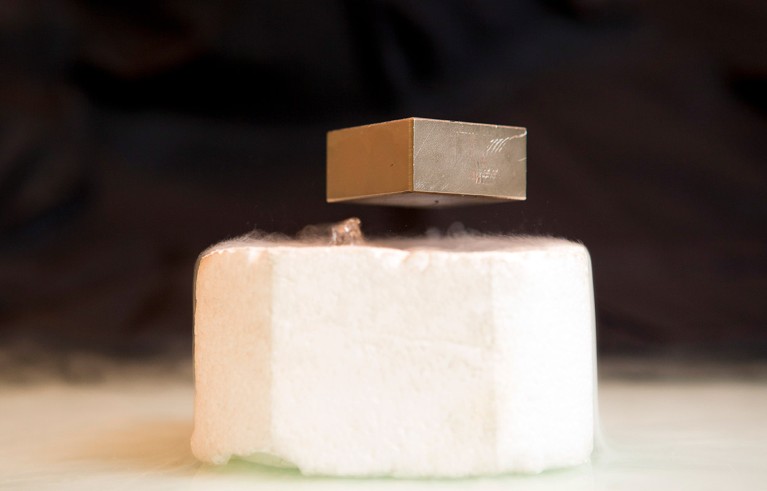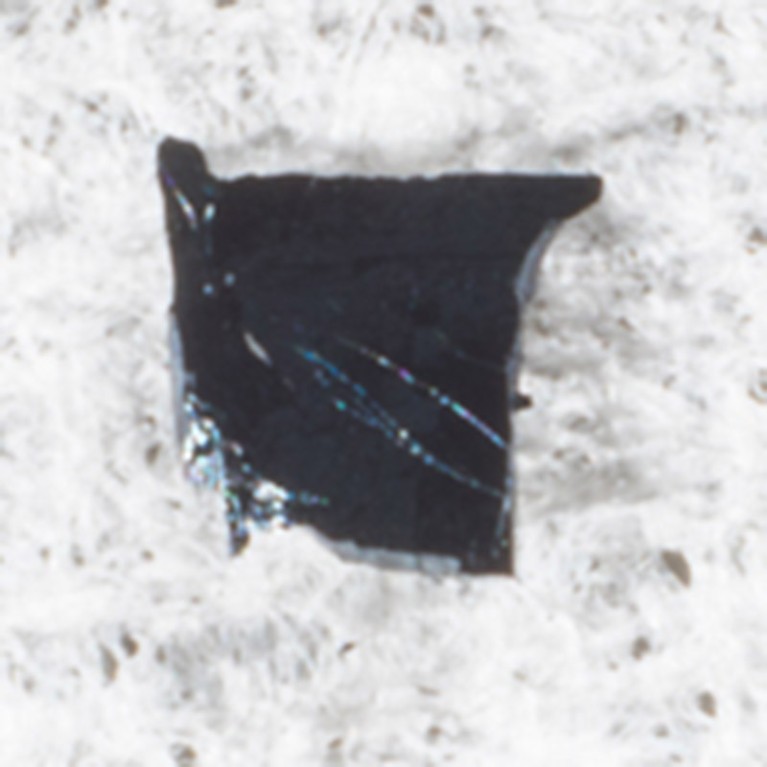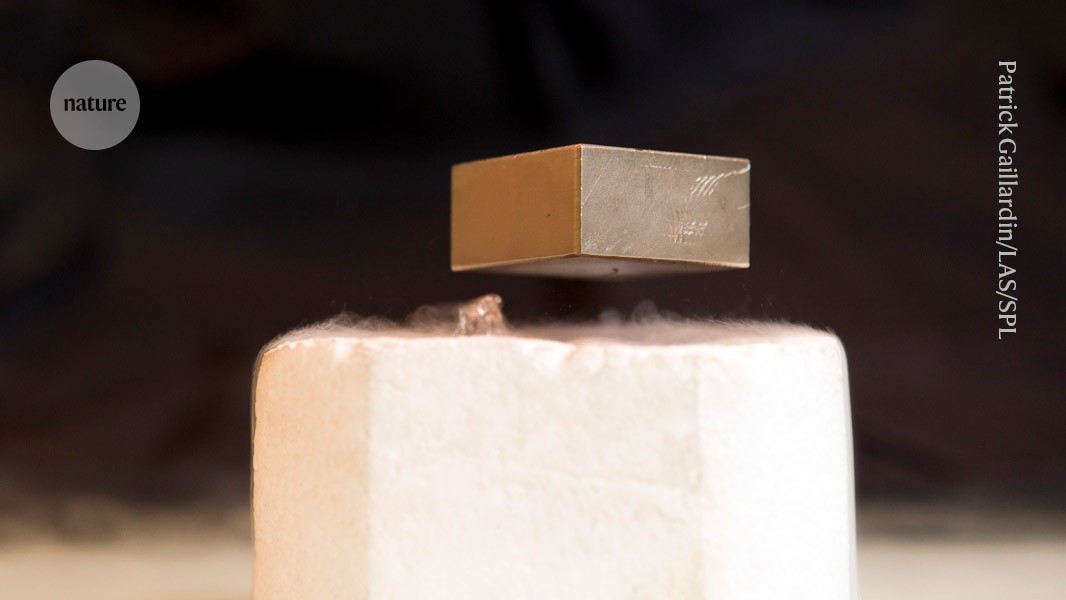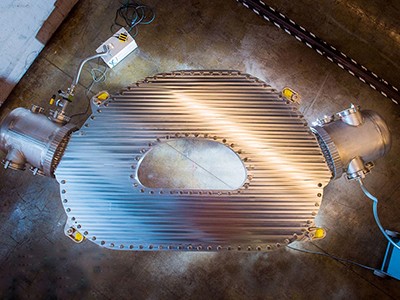
Superconductors would make make many technologies radically more efficient.Credit: Patrick Gaillardin/Look At Sciences/SPL
A new family of superconductors is exciting physicists. Compounds containing nickel have been shown to carry electricity without resistance at the relatively high temperature of 45 kelvin (–228 °C) — and without being squeezed under pressure.
Physicists at the Southern University of Science and Technology (Sustech) in Shenzhen, China, observed the major hallmarks of superconductivity in a thin film of crystals of nickel oxide, which they grew in the laboratory. They published their work1 in Nature on 17 February.
How would room-temperature superconductors change science?
“There’s a huge hope that we could eventually raise the critical temperature and make [such materials] more useful for applications,” says Dafeng Li, a physicist at the City University of Hong Kong.
Nickelates now join two groups of ceramics — copper-based cuprates and iron-based pnictides — as ‘unconventional superconductors’ that operate at room pressure and temperatures as high as 150K (–123 °C). This new data point could help physicists to finally explain how high-temperature superconductors work, and ultimately to design materials that operate under ambient conditions. This would make technologies, such as magnetic resonance imaging, radically cheaper and more efficient.
How unconventional superconductors operate at warmer temperatures remains largely a mystery, whereas the mechanism behind how some metals can carry electricity without resistance at colder temperatures, or extreme pressures, has been understood2 since 1957.
The ability of the Sustech researchers to precisely engineer the material’s properties is huge boon in trying to use nickelates to unravel the theory behind unconventional superconductivity, says Lilia Boeri, a physicist at the Sapienza University of Rome. “The idea that you have a system that you can sort of tune experimentally, is something quite exciting.”
Raising temperatures
Excitement in nickelates has been growing since 2019 when Li and his colleagues found hints that compounds containing nickel behaved as superconductors, albeit at cold temperatures. These materials’ structural similarity to cuprates raised hopes that nickelates could be coaxed to conduct at higher temperatures. A separate group demonstrated this in 2023, but the materials were under high pressure.

Crystals of a nickelate compound.Credit: Argonne National Laboratory
In December, researchers at Stanford University in California saw the first signs of nickelate superconductivity under ambient pressure. The researchers went further in latest study, showing that the nickelate crystals lost resistance at a critical temperature and expelled magnetic fields.
Nickelates have a way to go before their critical temperature at which superconductivity kicks in matches the cuprates. Raising this is “a priority”, says Zhuoyu Chen, a physicist at Sustech and study co-author. The team is trying various tricks to tweak the way the material is grown and its precise composition, he says.



